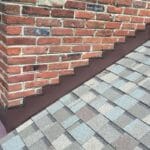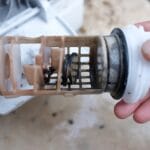Are you tired of staring at those unsightly water stains on your laminate countertops? You’re not alone.
Many homeowners face this frustrating issue, and it can feel like a never-ending battle. But what if you could restore your countertops to their former glory with just a few simple steps? Imagine the satisfaction of walking into your kitchen and seeing a smooth, flawless surface again.
In this guide, you’ll discover practical solutions to fix those pesky water damage problems. No more covering up with decorative items or accepting the blemishes as part of your decor. Dive into these easy-to-follow tips and transform your countertops, boosting both their appearance and your home’s value. Ready to reclaim your kitchen’s beauty? Let’s get started!
Identifying Water Damage
Laminate countertops are a popular choice in many kitchens due to their affordability and versatility. However, their Achilles heel is water damage, which can silently wreak havoc if not identified early. Recognizing the signs of water damage is crucial to preserving the beauty and functionality of your countertops. Let’s explore how to spot these signs and understand what causes them in the first place.
Signs Of Water Damage
Water damage on laminate countertops can manifest in several ways. You might notice bubbling or warping along the edges or seams. These are telltale signs that moisture has infiltrated the laminate surface.
Discoloration is another indicator. If your once vibrant countertop appears faded or has developed dark spots, water may be seeping underneath. Feel the surface; if it’s uneven or soft to the touch, this is a red flag.
Peeling laminate is a more obvious sign. This usually happens when water has penetrated deeply, loosening the adhesive that holds the laminate in place. Addressing these signs promptly can prevent further deterioration.
Common Causes
Understanding why water damage occurs can help you prevent it. One common cause is poor sealing. Without a proper seal, moisture can easily infiltrate the seams and edges.
Another culprit is constant exposure to water. If your countertops are near a sink or under a window, they are more prone to damage. Consider this: do you leave wet dishes on your countertop? This habit might be contributing to the problem.
Finally, accidental spills can also lead to damage if not cleaned promptly. A small spill may seem harmless, but if it finds its way into a seam or crack, the consequences can be significant. Keeping an eye out for these causes can help you maintain your countertops in the long run.
Have you ever noticed signs of water damage on your laminate countertops? What steps did you take to address them? Identifying and understanding the problem is the first step in preserving your kitchen’s integrity.
Gathering Necessary Tools
Water damage on laminate countertops is a common issue many homeowners face. Before diving into the repair process, gathering the right tools is crucial to ensure a smooth and effective fix. With the right equipment at hand, you can tackle the damage efficiently and avoid future problems. Have you ever found yourself halfway through a repair project only to realize you’re missing a key tool? Let’s prevent that frustration and set you up for success!
Essential Repair Tools
To start your laminate countertop repair, you’ll need a few essential tools. First, have a putty knife ready. This will help you remove damaged laminate and apply new adhesive smoothly.
Next, grab some sandpaper to smooth out any rough edges and ensure the new laminate adheres properly. Opt for a medium grit to start, and finish with a finer grit for a polished look.
Finally, a strong adhesive is necessary. A contact cement works well for bonding laminate to the countertop surface. Don’t forget a roller or a similar tool to press the laminate firmly into place.
Safety Equipment
Repairing countertops involves working with tools and materials that can be hazardous without proper precautions. Safety should always be a priority.
Ensure you have a pair of safety goggles. Protect your eyes from dust, adhesive splatters, and debris while you work.
Wear gloves to shield your hands from sharp edges and chemicals. A dust mask is also advisable when sanding, to prevent inhalation of particles.
Do these tools and safety gear seem unfamiliar? They are surprisingly simple to use, even for beginners. Having them ready not only makes the process smoother but also safer.
What would happen if you skipped safety equipment? The repair process could turn from a simple DIY into a costly medical expense. So, take a few moments to ensure you’re well-prepared before you start your repair journey.
Drying The Affected Area
Begin by thoroughly drying the affected area using a clean, absorbent cloth to prevent further damage. This step helps eliminate moisture, which can cause the laminate to warp or peel.
Water damage on laminate countertops is a common issue many homeowners face. When water seeps into the layers of laminate, it can cause unsightly swelling and bubbling. Addressing this damage promptly is crucial. A key step in the repair process is drying the affected area thoroughly. Proper drying ensures the laminate doesn’t sustain further damage and creates a stable base for any repairs.Using Dehumidifiers
Dehumidifiers are an effective tool for drying out water-damaged laminate. They work by pulling moisture from the air, which helps to dry out the wet surfaces more quickly. Place a dehumidifier near the affected area. Set it to a high setting to maximize moisture extraction. You might be surprised at how quickly it can dry out the area, making it easier to proceed with repairs. Check the water collection tank frequently. Empty it to ensure the dehumidifier continues working efficiently. Have you ever thought about how much humidity your home naturally has? A dehumidifier can reveal it.Applying Heat
Heat can be an excellent ally in drying laminate countertops. A simple hairdryer can be a handy tool for this task. Use it to target specific wet areas, applying gentle heat to evaporate the moisture. Keep the hairdryer moving to avoid overheating one spot. Overheating can cause further damage, so maintain a safe distance. Have you considered how often you use heat in unexpected ways? This is just one clever method. Alternatively, a heat gun can be used, but with caution. It provides more heat than a hairdryer, so use it sparingly to prevent damage. Always prioritize safety when using heat tools. These steps ensure your laminate countertop is dry and ready for further repair. What methods have you found effective in tackling water damage? Share your thoughts and experiences in the comments.Repairing Surface Damage
Repairing surface damage on laminate countertops can restore their original look. Water damage often leads to cracks and chips. These issues can make your countertop look worn out. Repairing these problems can improve the appearance and functionality. It also extends the life of the countertop. The process involves filling cracks and chips, and sanding the surface. With a few tools and materials, you can handle these tasks. Let’s explore how to do it step by step.
Filling Cracks And Chips
Begin by cleaning the damaged area. Use a damp cloth to wipe away dirt and dust. Make sure the area is completely dry before proceeding. For filling, you will need a laminate repair paste. Choose a color that matches your countertop. Apply the paste to the crack or chip using a putty knife. Press firmly to ensure it fills the void completely. Smooth out the surface with the flat edge of the knife. Allow the paste to dry according to the product instructions. This usually takes a few hours.
Sanding The Surface
Once the repair paste is dry, it’s time to sand the surface. Use fine-grit sandpaper for this task. Sand the repaired area gently in a circular motion. This will make the surface smooth and even. Be careful not to sand too hard, as it could damage the surrounding laminate. After sanding, wipe the area with a clean, damp cloth. This removes any dust particles. Finally, polish the surface with a soft cloth for a glossy finish. Your countertop should now look much better!
Replacing Damaged Sections
Replacing damaged sections of laminate countertops involves removing and discarding the affected parts. Use new pieces of laminate to patch up the damaged area. This simple fix restores your countertop’s appearance and functionality.
Replacing damaged sections of your laminate countertop might seem daunting, but it’s a practical solution that breathes new life into your kitchen. Water damage can cause unsightly bubbles or even cracks. Tackling the repair by replacing affected parts ensures a seamless look and extends the countertop’s life. Let’s dive into the steps involved in this process.Removing Affected Laminate
Start by identifying the damaged sections. Carefully use a utility knife to cut along the edges of the affected area. Be patient and gentle to avoid extending the damage. Once you’ve cut through, gently lift the laminate using a putty knife. Work slowly to prevent chipping or breaking nearby undamaged laminate. If you find the adhesive stubborn, apply a bit of heat with a hairdryer to soften it.Installing New Laminate
Measure the area that needs replacement. Precision is key here; a perfect fit ensures a flawless finish. Purchase a new laminate sheet that matches your existing countertop color and pattern. Before installation, clean the exposed surface thoroughly. Dust or debris can affect the adhesive’s effectiveness. Apply a strong adhesive evenly to the surface and carefully position the new laminate. Press down firmly, ensuring no air bubbles get trapped. Use a roller to smooth out the laminate. Allow the adhesive to cure as per the manufacturer’s instructions, usually several hours. Have you ever found yourself in the middle of a repair, only to realize you’ve underestimated the time it takes? It happens to the best of us. Allocate enough time for this project to avoid rushing and ensure a quality finish. Engaging with DIY projects like this can be rewarding. You’re not just fixing something; you’re enhancing your home’s aesthetic and value. What are your thoughts on tackling home repairs? Have you faced any unexpected challenges or rewarding successes?
Credit: www.youtube.com
Sealing And Protecting
Water damage on laminate countertops can be frustrating, but sealing and protecting can save the day. This process not only repairs existing damage but also prevents future issues. Imagine a countertop that withstands spills and resists stains. That’s the goal here, and it’s easier than you might think. Let’s dive into some practical steps to achieve a durable, water-resistant surface.
Applying Sealant
To start, choose a high-quality laminate sealant. It’s important to pick one that matches your countertop finish. A clear sealant works best for most surfaces.
Begin by cleaning the countertop thoroughly. Remove all debris, grease, and moisture. A clean surface ensures the sealant adheres properly.
Apply the sealant evenly across the surface using a brush or roller. Be generous but avoid excess pooling, which can lead to uneven drying.
Allow it to dry completely. Check the manufacturer’s instructions for drying times. Rushing this step can compromise the seal.
Preventive Measures
Prevention is your best friend when it comes to laminate countertops. Regular maintenance can extend the life of your sealant.
Consider using coasters and trivets under hot pots and pans. Heat can weaken the sealant over time.
Wipe spills immediately. Leaving water on the surface can penetrate the seal, leading to damage.
Use gentle cleaning products. Harsh chemicals can erode the protective layer.
Now, here’s a thought: How often do you inspect your countertops for minor damage? Regular checks can catch issues early before they become major problems.
Remember, taking a few extra steps today can save you from costly repairs tomorrow. Protect your investment and enjoy a beautiful, functional kitchen for years to come.
Maintaining Laminate Countertops
Fixing water damage on laminate countertops requires careful attention. Dry the area thoroughly and sand any swollen spots gently. Apply waterproof sealant to prevent further issues and restore the surface’s appearance.
Maintaining laminate countertops is crucial for prolonging their lifespan and keeping them looking fresh. Water damage can be a sneaky culprit, often resulting in unsightly bubbles or warping. By taking proactive steps, you can prevent this damage and ensure your countertops remain in pristine condition. Let’s dive into some effective ways to care for your laminate surfaces.Regular Cleaning Tips
Consistency is key when it comes to cleaning laminate countertops. Use a mild detergent mixed with warm water for daily cleaning. This ensures you remove dirt and grime without harming the surface. Avoid using abrasive pads or harsh chemicals that can scratch or dull the laminate. For stubborn stains, a baking soda paste can work wonders—just remember to gently rub it in. Have you ever noticed sticky residue building up? A simple solution of vinegar and water can cut through it, leaving your countertops spotless.Avoiding Future Damage
To prevent future water damage, always wipe up spills immediately. Water left to sit can seep into seams and cause bubbling or warping. Consider using trivets or cutting boards to avoid placing hot pans directly on the countertop. Heat can weaken the adhesive holding the laminate in place. Think about the placement of appliances like coffee makers or kettles. Steam can rise and affect the edges of laminate surfaces, so ensure these are positioned with enough clearance. Do you often rest heavy items on your countertops? This can lead to pressure points and eventual damage. Distribute weight evenly to maintain the integrity of your laminate. By adopting these simple habits, your laminate countertops will remain beautiful and functional for years to come. Are you ready to make these changes today?
Credit: diy.stackexchange.com

Credit: diy.stackexchange.com
Frequently Asked Questions
What Causes Water Damage On Laminate Countertops?
Water can seep through seams or scratches. This weakens the glue underneath, causing swelling or buckling.
Can Water-damaged Laminate Countertops Be Repaired?
Yes, minor damage can be repaired. Use sealants, fillers, or replace affected sections for best results.
How Do You Prevent Water Damage In The Future?
Seal seams and edges. Wipe spills quickly. Use coasters and mats to protect surfaces.
What Tools Are Needed For Countertop Repair?
Basic tools include sealant, filler, a putty knife, and sandpaper. You might need a replacement laminate sheet.
Is Professional Help Necessary For Fixing Damage?
Not always. Minor repairs can be DIY. Severe damage might need a professional for proper restoration.
Conclusion
Fixing laminate countertops with water damage is doable. Start by assessing the damage. Clean and dry the affected area thoroughly. Use wood filler for small cracks or holes. Consider a repair kit for larger issues. Seal the surface to prevent future damage.
Regular maintenance keeps countertops looking good. Follow these steps for a durable fix. Enjoy a refreshed kitchen space. With care, your countertops will last longer. Stay proactive in preventing damage. Remember, small repairs can save money. Keep your kitchen beautiful and functional.
Your countertops deserve attention and care.




